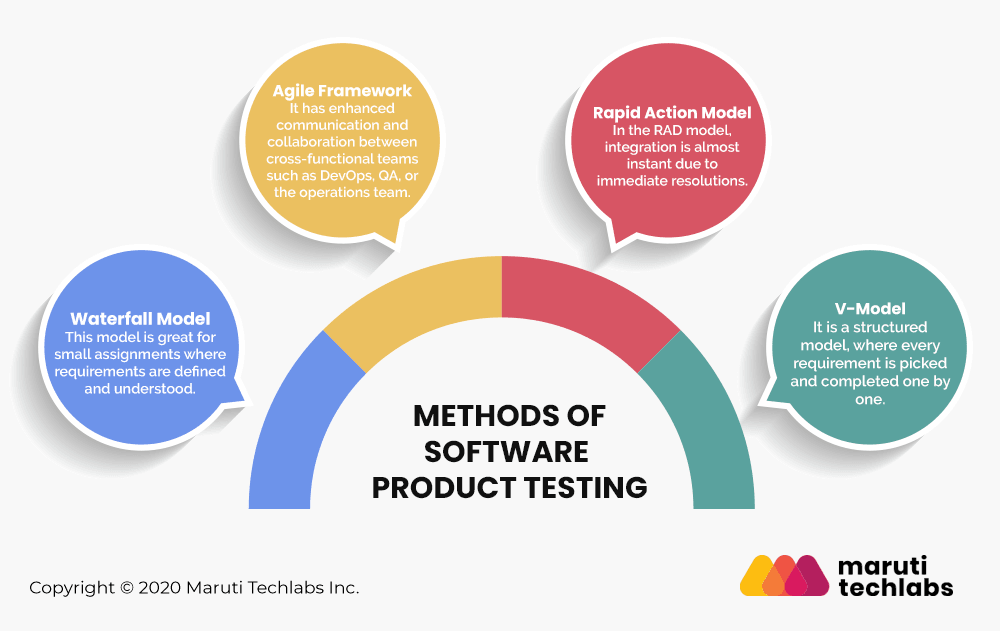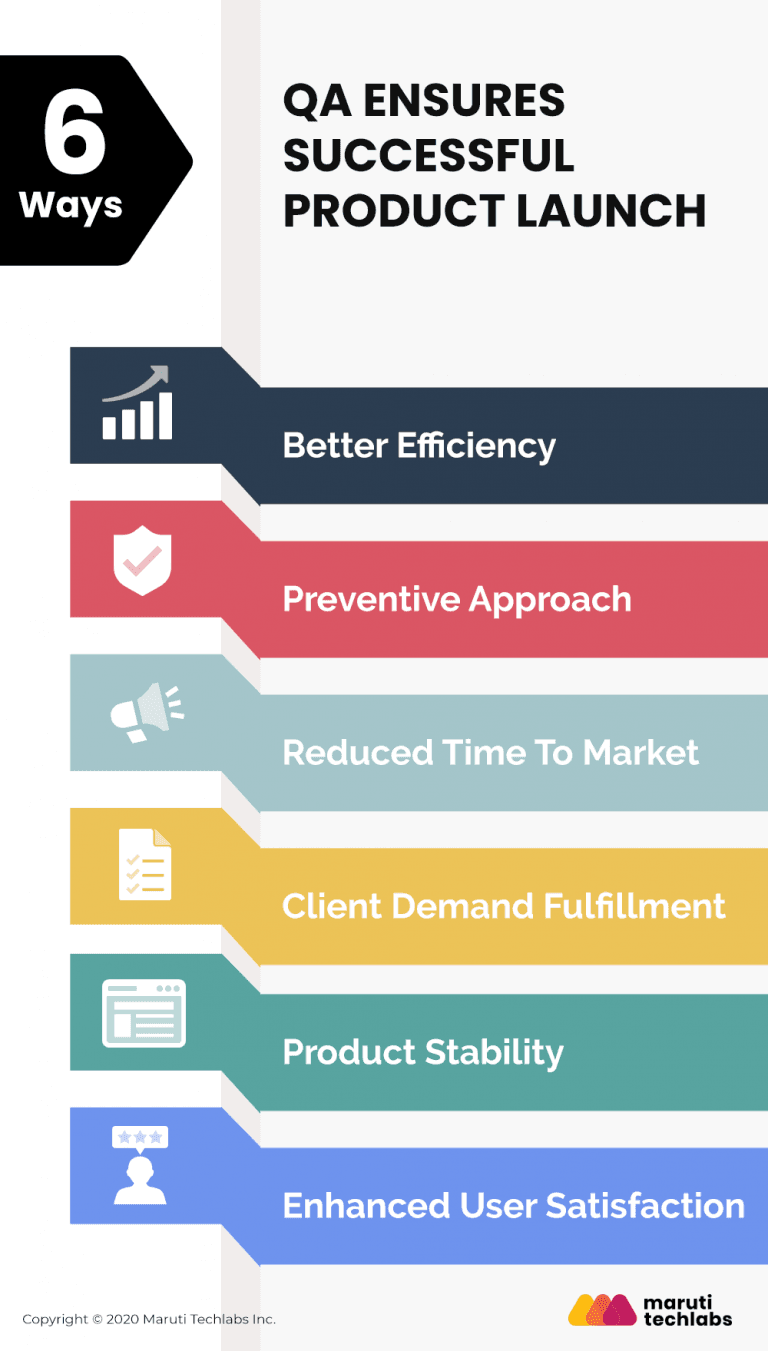

QA for Product Development: Tips and Strategies for Success






The term ‘quality analysis’ is not new to us. Software product testing has always been a crucial part of the product development life cycle. But even with its highlighted importance, the discipline of QA in product development is often pushed to the backseat as other aspects cloud the mind of the team.
Regardless, it is impossible to ignore the importance of quality analysis. If the product development team designs the product and directly sends it to production, they will eventually come across bugs and glitches, which they could have otherwise caught during the QA cycle.
It is not a difficult task to gauge the significance that software product testing holds. In this article, we will discuss details of software testing and QA in product development.
Product testing is not only essential to identify and correct the errors and glitches but it also ensures that the development process follows a pre-planned and efficient approach.
Conducting software product testing efficiently is the only way one can spot the bugs and errors beforehand and make sure a successful and reliable product is launched in the market. In the following sections, we discuss how you can achieve that. Let’s first understand the role of QA in product development.
A brief overview of the role of QA:
An array of models is utilized for QA in product development. Discussed below are 4 such software product testing models and their features:

One of the fundamental models utilized for software development quality analysis is the waterfall model. The product developers create a downward flow containing processes that help them reach the final outcome.
Of course, this is a feasible and easy model to execute, but it is not efficient. You don’t have the flexibility to update requirements or start the testing phase alongside software design. These drawbacks have reduced the popularity of this model.
Features:
The agile model is a widely utilized QA model now. Here, every cross-functional team collaborates and works on an incremental and iterative model. This model exhibits adaptability and transparency, which leads to better delivery and customer satisfaction.
Due to continuous development in an agile framework, it is possible to continuously find errors and remove bugs.
Features:
The rapid action model collects the requirements from user focus groups. In this scenario, rapid prototyping is important, which is followed by iterative delivery. It is basically a sub-category of agile development.
Any product developed with this method is inherently adaptable and efficient.
Features:

The V model is better than the waterfall model because testing and development are achieved alongside. Further, unit testing is the starting point that spreads to the whole system.
This model has higher chances of success, and the time spent too is less than the waterfall model.
Features:

Customer satisfaction is directly proportional to quality of the product. Below, we have explained the benefits and importance of QA in software product development.
The best type of marketing is offering quality to your users. For any user, a smooth experience guarantees satisfaction. They want the entire tech implementation to be seamless and valuable in the end.
With rapid tech improvements, the concept of brand loyalty is diminishing, and patience-level is thinning. This indicates that if you fail to offer an intuitive, quality product to the user, you may fail to retain the user. They won’t think twice before shifting to another provider for an improved experience.
Hence, if you are successful in ensuring quality execution to users, you can seamlessly improve their satisfaction related to a brand. It includes finding mistakes in the software product without customers pinpointing the issues. Being proactive is the key here, and that comes with continuous quality assurance and software testing. So, the better and glitch-free execution you offer, the better satisfaction you deliver.
Through QA, you can build reliable and accessible software applications. Your team should pay the necessary attention to UX-related problems and glitches to improve the manner in which a user traverses your applications. With improved UX and product delivery, revenues and brand reputation increase, and as a byproduct, user satisfaction increases.
It is possible for software development teams to avoid software failure by integrating QA cycles within the development cycles.
Creating a strategy to ensure software quality ascertains that the development team is consistently keeping track of user requirements and making innovative additions to the product. When the team deviates from this plan and avoids QA cycles or software testing, the end product is faulty and full of bugs. This translates to a lot of rework and crossed deadlines, and that decreases product efficiency.
When you are working on the same product over and over again and still failing to reduce the total occurrences of bugs, your final product is not efficient. With QA, your product glitches are solved regularly at every stage. This helps in improving the final efficiency and outcome.
A prime requirement with software development is predicting glitches and bugs before they occur. This approach needs the expertise of an experienced chief technology officer (CTO). To efficiently bridge the gap between business goals and technology solutions, we suggest you connect with IT companies that offer CTO consulting services from the beginning.
Software quality is a consistent effort that the entire team needs to make, which means that even the QA team should be a part of the execution from the beginning.
With traditional methodologies, software testing was constricted to finding bugs at the end of the development. At this stage, there’s no option left other than reducing the bugs that are already in the system.
With evolving methods, software testing can take a preventive route. This means implementing QA a little too early in the software development cycle to find and address bugs that might arise in the future, including issues of performance, functionality, and security.
Having a proactive QA strategy helps in detecting errors that might lead to future failures. This is possible because quality assurance processes are designed to remove features that are not in-line with standards or are not offering value to the product. This helps create an intuitive, high-performing, and stable application.
Every user wants to receive or download an application that runs without interruption or crashing. Thorough QA processes ensure that the software application meets the unique performance, functional, and security requirements of the user. Every browser, device, and working environment should integrate well with this application to provide optimum quality and user satisfaction.
It is noteworthy that QA processes ensure a smooth continuous flow of functions, eliminating defects, and improving end-result for the user. This doubly ensures the stability of the system and offers valuable functionality to the user.
The QA team can help you meet the requirements of the user. It helps in ensuring that the final application is aligned with user requests and development needs. In this respect, the application should be scalable, reliable, robust, and fully functional.
Finding defects and software issues early in the software development life cycle reduces the time to market. When your team is revealing bugs continuously and improving software efficiency and performance, they are reducing the time it takes to develop the software project.
You don’t have to wait till the end to ensure QA and then deal with extended deadlines because there’s never enough time. Incorporating quality assurance processes and test automation early in product development keeps your timelines in line with the requirements.
With cutthroat competition and abundant customer options, the importance of quality engineering in software testing cannot be underestimated. As a fast-growing company, including software product testing at the end of the complete product development, is a time-consuming and resource-intensive approach.
It would be wise to use automated unit testing tools and involve your QA team in the product development life cycle from the beginning of the project. You can also contact a software product engineering consulting company and hire skilled QA engineers to ensure unmatched performance through streamlined product testing.
For top-notch quality assurance services, drop us a note here, and we’ll take care of it from there.


